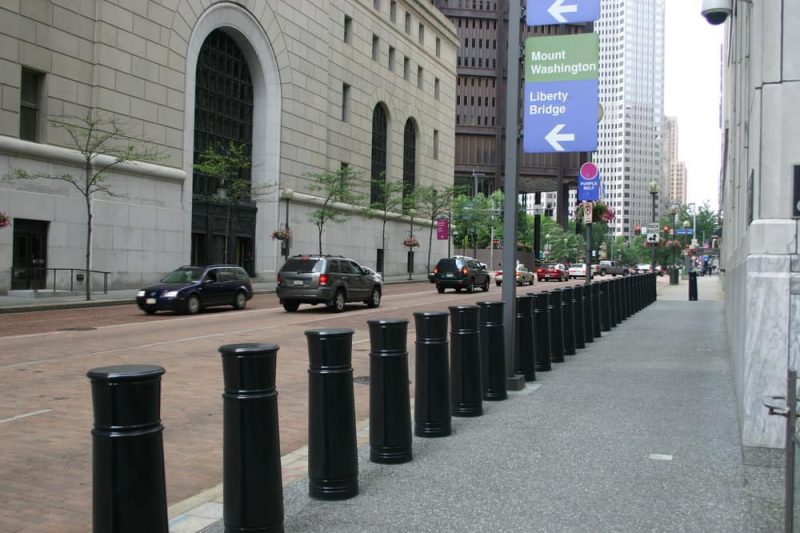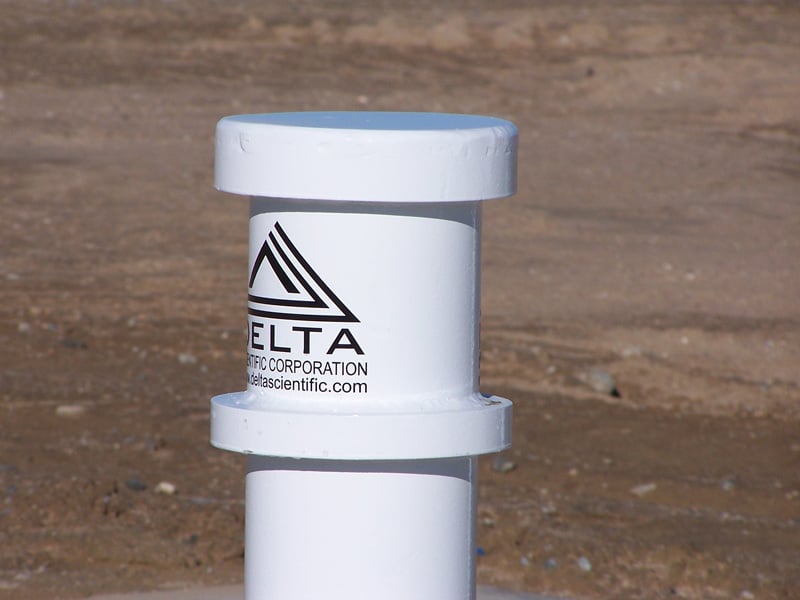Your Guide to Typical Bollard Code Requirements
Bollards are short, sturdy posts installed in the ground, or just at the surface, to create a boundary between a roadway and a building or pedestrian area. Bollards allow foot traffic to flow freely while signaling to drivers that vehicles cannot enter a certain area. Bollards can even add aesthetic appeal. When installing Delta Scientific bollards, you must comply with applicable bollard code requirements. These may be part of a larger building code and ensure that the construction is safe for the general public.
Examples of Bollard Code Requirements
Federal, state, and municipal governments may all impose their own building codes. Therefore, code requirements for bollards may vary significantly based on which government has jurisdiction over your project.
However, while the specific requirements may vary, most codes relating to bollard installation address the following aspects.

Height
Most bollards have to fall within a certain height range. Drivers may not be able to see bollards if they are too short. However, if the bollards are too tall, they may obscure pedestrians from drivers or block pedestrians’ visibility. Most bollard code requirements require bollards to be between 36 and 48 inches tall.
Depth
A bollard’s height refers to the portion that extends above the level of the ground, while the depth refers to how much of the bollard must extend below grade. The depth requirements depend on the purpose of the bollard. If the bollard is to be merely decorative, the code may not specify a certain depth for installation.
However, if the bollard is protective, intended to prevent vehicles from crashing into pedestrian areas, then the code requirements may specify a particular depth. For a new construction, bollard code requirements may require that you sink the bollards as deep as four feet below grade.
If you are retrofitting an existing building with protective bollards, the depth requirement may be different. It may not be possible to excavate as deeply as a new construction would require because of existing infrastructure, such as utility lines, that the excavation could damage. The code may stipulate that, in a situation like this, you need shallow foundation bollards. This requires the installer to pour a shallow concrete foundation that is wider than normal to provide the necessary support and crash protection.
Spacing
Bollard code requirements often specify the distance between bollards that you must maintain. If the bollards are too far apart, they do not present a sufficient barrier against oncoming vehicles because the vehicles can drive between them. However, if they are too close together, they may impede foot traffic.
Materials
If the bollards must provide crash protection, the code will probably require that they consist of a pipe of cast iron or steel, anchored in concrete.
Crash Rating
Organizations such as the U.S. Department of State and ASTM International set standards to determine how effective protective bollards are at stopping speeding vehicles. Building codes may require that bollards meet these standards. We will explain crash ratings in more detail in a moment, but generally speaking, the rating reflects the speed at which the bollard can stop the vehicle and how far past the barrier the stopped vehicle extends.
Accessibility
In the United States, the Americans With Disabilities Act guarantees equal access to public places for people with physical and mental disabilities. For example, the ADA requires that safety barriers, such as bollards, cannot interfere with a disabled individual’s ability to enter the property or exit the property, nor move around freely within it.
De Facto Versus De Jure Bollard Requirements
De jure bollard code requirements refer to those expressly set forth in the law, whether it be a federal law such as the ADA or a municipal code specific to a certain community.
When the law is silent on certain requirements, or not specific enough, de facto bollard requirements based on common practices and industry standards may apply. For example, ASTM standards for bollards, which we will discuss in a moment, do not specify how tall bollards must be. However, a height range of 36 to 48 inches is common, so most bollards fall within that range as a de facto standard even if the code does not expressly require it.

ASTM Bollard Standards
In some cases, the code may not include specific requirements for bollards. Instead, it may simply stipulate that the bollards must conform to standards set by an organization such as ASTM.
ASTM stands for the American Society for Testing and Materials. The organization expanded its scope worldwide and now refers to itself as ASTM International. Its members include technical experts from around the world who work together to develop safety standards for products and services.
Crash Rating and Penetration
We at Delta Scientific make bollards that meet the ASTM F2656 standard. This relates to barriers that prevent high-speed vehicle crashes. Bollards that meet the F2656 standard receive an M-rating based on the speed at which they can stop a 15-pound vehicle. For example, if the bollard is effective at stopping a vehicle traveling up to 30 miles per hour, it receives an M30 rating. According to ASTM F2656, the highest crash rating possible is M50, which is effective at stopping a 15,000-pound vehicle traveling up to 50 miles per hour.
Spacing
As we mentioned previously, the ASTM does not specify a specific height for bollards. However, it does require that there can be no more than 48 inches between two bollards that are next to one another.
Standards From Other Organizations
Bollard code requirements may refer to standards set by organizations other than ASTM International. Organizations that set standards for bollards include the following:
- Occupational Safety and Health Administration (OSHA)
- National Fire Protection Association
- International Building Code
The applicable building code should refer to the standard that your bollards must meet.
Customization Options in View of Bollard Code Requirements
Even strict bollard code requirements often give you the option to customize safety barriers so that they better match your outdoor aesthetic. Delta Scientific offers customization options, such as decorative covers, on many of our products. Contact us to discuss your physical security needs.
Sources:
https://sn.astm.org/update/low-speed-pedestrian-barriers-so12.html
https://www.astm.org/f2656_f2656m-20.html
https://codes.iccsafe.org/s/IFC2024P1/chapter-12-energy-systems/IFC2024P1-Pt03-Ch12-Sec1207.11.7.3
https://www.astm.org/f3016_f3016m-19.html
https://medium.com/@coveryourbrass/how-tall-are-the-average-parking-bollards-1777bbba2a16
Share This Story, Choose Your Platform!
